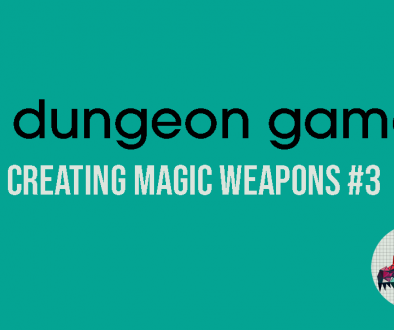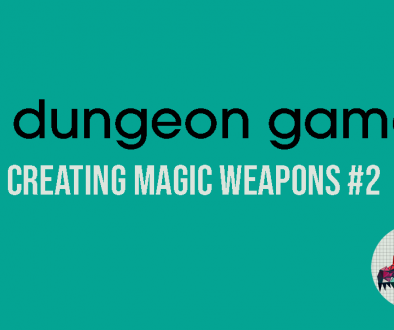Dungeon Corner #1
This post was published to Patreon a month before it went live on this website. Sign up from £2 per month to get early access and exclusive content.
Welcome to the first instalment of what I’m tentatively calling “Dungeon Corner”, a regular series of posts in which I look at the adventures published in TSR/WoTC/Paizo’s Dungeon Magazine. As I said in the first post about this project, I’m still not sure as I write this exactly what form these posts will take. There will be an element of “review” in here, but I’m more concerned with looking at these adventures and seeing if there’s anything modern writers can learn about writing modules from them, or if there’s anything fun that you can steal for your games. The form will hopefully reveal itself to me over time.
This first post is publicly available immediately on being posted, just so that people can see what these things look like. Future posts will be Patreon exclusive for a little over a week before going live on Loot The Room. So if you’re into this and want to follow along, sign up for the Patreon!
Today we’re starting at the beginning with issue 1. It’s a 68 page issue (including covers, letters, and advertising) which contains six adventures:
- The Dark Tower of Cabilar, by Michael Ashton and Lee Sperry (15 pages)
- Assault on Eddistone Point, by Patricia Nead Elrod (9 pages)
- Grakhirt’s Lair, by John Nephew (10 pages)
- The Elven Home, by Anne Gray McCready (4 pages)
- Into The Fire, by Grant and David Boucher (19 pages)
- Guardians of the Tomb, by Carl Smith (7 pages)
Those page counts are taken just from looking at the contents page, so they may not be exactly accurate – there will be advertising and other things breaking up those numbers. But as a rough guide they’re useful. I’m going to split this issue into two posts, looking at the first three adventures today and the final three next time.
The Dark Tower of Cabilar
“A vampire has the royal crown – and you’ve got to get it back.”
The issue opens with an AD&D adventure for 4-8 characters of 4th-7th level. The text specifies that “the party should have several fighters and at least one magic user, thief, and cleric. Magical weapons are required”.
The adventure structure we’ll recognise from modern D&D and Pathfinder adventures is already in full force here. We open with an Adventure Background, a section titled “For The Dungeon Master”, some boxed text under the heading “Starting The Adventure”, and then straight into keyed areas. This adventure started life as a tournament module, which means it’s a very classic dungeon crawl and also doesn’t really do anything hugely interesting.
There’s a strong hook – an evil wizard killed the city council and usurped the throne and now, years later, the surviving prince has come of age. He needs his crown to be able to claim the throne, but the crown has been stolen by a vampire who lives in the very same tower that the wizard lived in before his conquest. Your mission is to storm the tower, kill the vampire, and get the crown back.
Strong hook aside, though, this adventure is basically just a gauntlet filled with set-piece encounters and no wandering monsters. In that respect it actually feels quite modern in its design – wandering monsters don’t really work in tournament play because every group needs to have the same experience, and modern 5e/Pathfinder adventures have done away with them almost entirely. Here the text explicitly calls out that there are no wandering monsters, explaining that “the creatures which dwell within the tower and dungeon are, for the most part, charmed or trained to protect an area, or have no choice in their actions by the way their room is designed or by what is protecting their exit. They are also enchanted to resist hunger and have no desire (thanks to Cabilar’s magic) to leave the dungeons”. Because it’s a tournament module there’s also an assumption that most encounters will tend towards combat.
The location of the tower itself, plus the means of accessing it, are both pretty fun. The tower is inside a huge cavern in the side of a cliff, and initially it looks like a massive stalagmite. It has no entrances or windows around the base – instead there are wooden ledges “high up on its sides”, and some narrow windows that start about 90’ above the ground.
In classic tournament style, accessing the dungeon itself becomes the first challenge. You can only get in via the windows, so you probably have to climb the walls, and the wooden ledges are obviously bait – they risk collapsing once anything weighing more than 200lbs is placed on them. The mechanism by which this works is a little cumbersome:
“Whenever 200 lbs. or more is placed upon a ledge, that ledge must make a saving throw of 10 or greater on a d20, with a -1 on the save for each 10 lbs. over 200. For instance, if a fighter weighing 223 lbs. (gear included) stands on a ledge, the save for the ledge is a 12 on a d20. Note that if a 150-lb. fighter stands on a ledge and attempts to pull up a 70-lb. halfling, the effective weight on the ledge is 220 lbs.! If a ledge fails a save, it collapses, carrying all upon it down, doing 1d6 hp damage per 10’ fallen, cumulative. There should be ample warning for a reaction: “The ledge creaks loudly under you,” etc.). If the ledge makes its save, loud creaking and popping noises are heard.
Even if the ledge survives its initial saving throw, any shift or addition of weight requires a new save. If a character tumbling from the ledge hits the one beneath it (which he will if one exists), the lower ledge makes a save also, requiring an 18 or above on a d20 to keep the character from falling to the next ledge (or the cavern floor).”
Saving throws and working out bonuses aside, I can picture this being a really fun, chaotic encounter – especially if you were to run this in DCC as a funnel, where you suddenly have 16 peasants trying to climb the tower. And of course there are also four firedrakes to contend with, which emerge once “several characters are actively climbing the tower”. There’s a whole section talking about how to adjudicate area of effect spells like fireball, and I particularly love this detail:
“Firedrake blood burns, as noted in the Fiend Folio Tome, making the creature into a living (suicidal) fireball for one round.”
This first encounter is honestly the best thing in the adventure for a while. Once the party is inside the dungeon it becomes a bit of a funhouse, with mimics disguised as stairs, an ettin just hanging out in a room, and a “puzzle” room that punishes players for stepping on the wrong floor tiles, with no indication that there’s anything different about them. This is the sort of encounter design I really hate. There is one encounter with thousands of tiny, harmless spiders swarming over characters who disturb them that’s gross, which I quite enjoyed, but frankly there’s very little else in here that I think is noteworthy. It’s a shame that the adventure peaks with the first encounter, but I think that opening section is very stealable.
Not the most auspicious start to Dungeon Magazine, but I think we may need to manage our expectations for a while.
Assault on Eddistone Point
“What happened to the signal tower? What waits for you in the misty mountains?”
Our second adventure is also for AD&D (in fact all of the adventures in this issue are for AD&D, which isn’t true of future issues), this time for 3-5 characters of 1st-3rd level.
This is an interesting one, because it’s essentially a miniature sandbox. If someone published this as an OSR module today I don’t think I’d think twice about it, though I’d perhaps expect there to be a little more weirdness to it. We’re given the situation – two neighbouring city states use signal beacons to communicate, and a magic-user and her companions were hired to cast a continual light spell on the beacon here but haven’t returned – and then we’re given a surprising amount of information about the local area. After the first two pages of introduction setting up the scenario, situating the town, and telling us about the missing party, a further the next three pages of this nine-page adventure are given over to detailing the town and the surrounding area itself.
There’s nothing particularly special about this location but those three pages do as much work to make this a living space as many 40 page gazetteers do, especially when you add in the major NPCs detailed in the last page. None of those NPCs have set locations in the village – there are no dioramas here, just a naturalistic location waiting for the player characters to descend on it.
Inside the tower it’s again quite naturalistic and understated, with nothing that jumps off the page and says “I’m an amazing encounter”, but I actually think that’s a good thing. If every adventure you run is filled with massive set pieces then nothing feels special – you need the small mundane stuff to juxtapose the big stuff against, and this serves up small and mundane well without being boring. There’s a hostage situation, plenty of people to talk to, some cool ways to navigate the scenario and gain access to the tower without going in the front door, and when the adventure is complete you have a solid starter village to serve as a base for future adventures.
This adventure feels like a bit of a hidden gem, despite not doing anything flashy. In terms of first level adventures for new players I think you could do a lot worse than to run this, and then build out the campaign world with this at the center of your map as the players begin to explore more.
Grakhirt’s Lair
“The leader of a norker uprising is free. Go find him!”
The final adventure we’re looking at today is for 4-8 characters of 1st-3rd level, including “at least one strong fighter (above 1st level) […] to increase survival chances in difficult combat encounters).
My immediate question here is “what the hell is a norker”? According to the Forgotten Realms wiki they’re something like a hobgoblin. I don’t know why you wouldn’t just use goblins, frankly, but here we are.
The pitch is that a powerful illusionist called Grakhirt who “dreamed of raising humanoid armies who would rise up at his calling and follow hin in conquest across the lands”. He manipulates the norkers, organised them into a rough army, and laid waste to the local town. Nobody knows anything about Grakhirt other than his name and that he commands the norkers. The adventure takes place in the immediate aftermath of a massive battle that devastated both the norkers and the local militia, with the remaining norker army pushed back into their lair. The players arrive just in time for somebody to send up the bat signal and ask for the remaining norkers and Grakhirt to be killed.
If I’m being perfectly honest here, the extensive background to this adventure – most of which is relatively useless, and written in that classic dry encyclopedic tone that’s plagued RPG writing for half a century – absolutely bored me to tears. It uses far too many words to say “a goblin army is raiding the local area and we’d like it to stop, please”. The lair itself is also deeply uninteresting, and I’m struggling to find anything worthwhile here. The author has tried to seed this adventure with things to set up further campaign play – random encounter tables for the local wilderness, a connection with an assassin’s guild that could lead to future adventures – but it all just falls a bit flat. I very much believe that published modules should offer you something that you couldn’t (or wouldn’t) come up with yourself at the table, and I think that if I said “you’re running a game in half an hour, do something with a goblin army terrorising the local settlements” you’d be able to run something very similar to this by generating a random cavern map and sketching out half a page of notes while your players were arriving.
Wrapping Up
So, not a huge amount to work with in the first half of the first issue of Dungeon, but we can’t expect to find gold every time. I do think that the opening encounter from “The Dark Tower of Cabilar” would be a lot of fun as a funnel, and “Assault on Eddistone Point” is a solid starter village that takes up much less space on the page than something like T1 The Village of Hommlet, so it’s not a terrible start. I’m confident we’ll encounter better issues, but I’m also 100% sure that we will encounter issues that are much, much worse than this one.
Next time we’ll take a look at the final three adventures in issue 1. In the meantime, let me know if you have any thoughts about these three or any ideas for things I could include or focus on in this series going forward!




